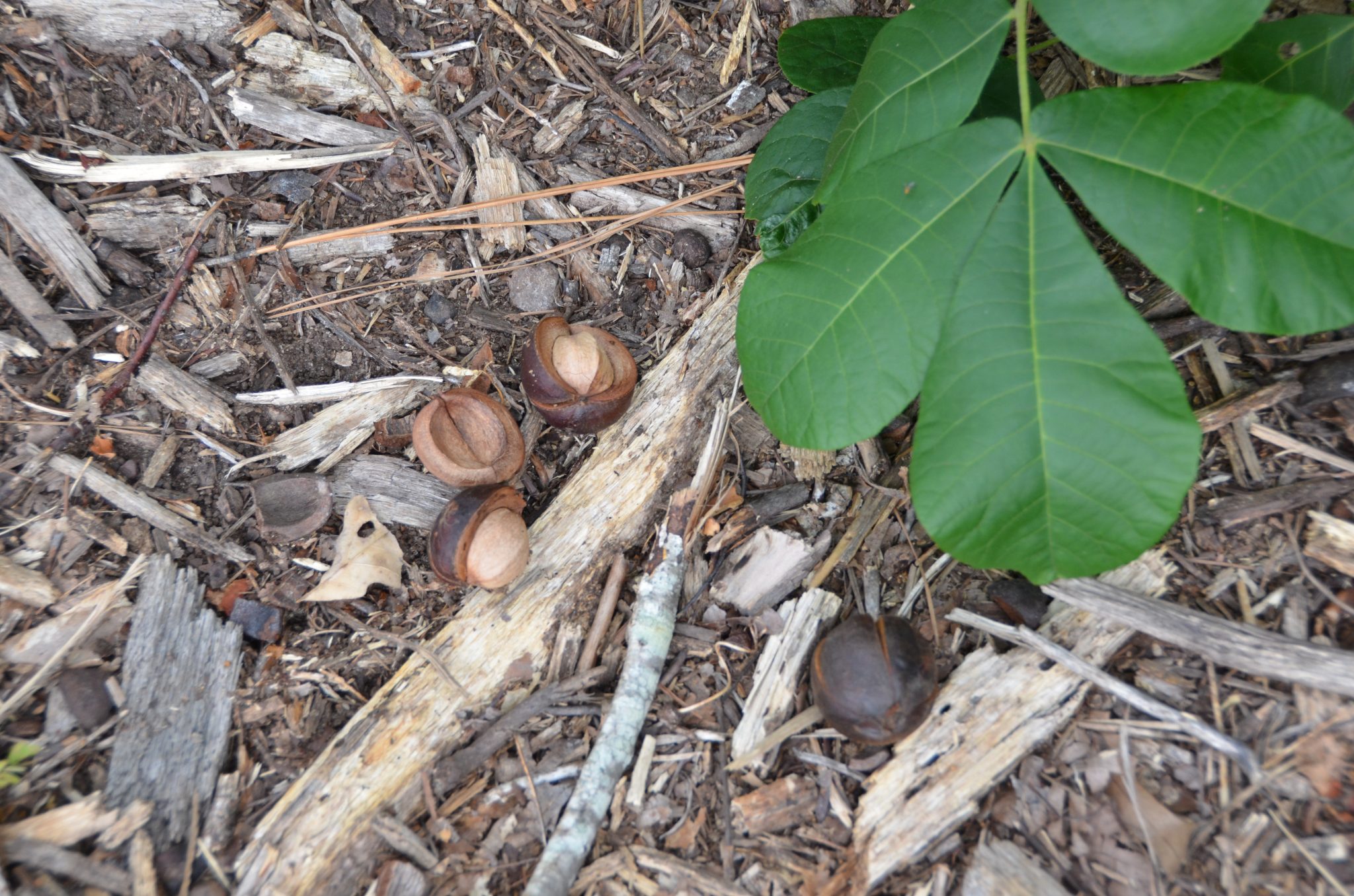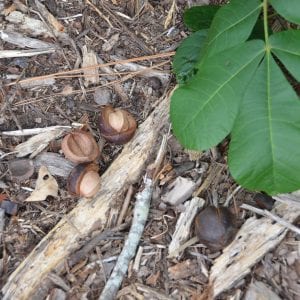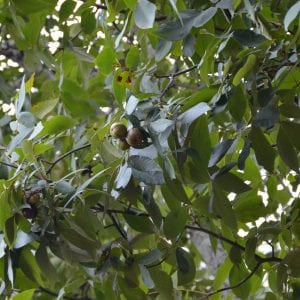Forestry

Learn about hardwood timber value and several common management techniques that can be used to improve hardwood timber profits. Since considerable skill and knowledge may be needed to carry out these techniques, landowners interested in hardwood management may wish to seek additional advice and information from a professional forester or from their county Cooperative Extension Service office.
Alabama’s hardwood forests provide clean water, great natural beauty, recreational opportunities, timber, and habitat for thousands of plant and animal species. Half of all standing timber in Alabama is hardwood and two-thirds of all forested acreage is comprised of hardwood trees or a mixture of hardwoods and pines. Approximately 200 species of hardwoods are native to Alabama, including 28 species of oaks, 8 hickories, and 6 magnolias. This compares to 13 species of native conifers, which include pines, cedars, and baldcypress. Through forest management, the many benefits of hardwood forests can be protected and enhanced. In some cases, good profits from timber are possible. However, if improperly handled, hardwood forests can be seriously degraded in value.
This publication discusses hardwood timber value and introduces several common management techniques that can be used to improve hardwood timber profits. Since considerable skill and knowledge may be needed to carry out these techniques, landowners interested in hardwood management may wish to seek additional advice and information from a professional forester or from their county Extension office.
Quality: The Key to Hardwood Value
The profitability of hardwood timber management depends on the forest’s capacity for producing high-quality, high-value wood products such as furniture grade sawtimber and veneer. These products require trees that are straight, have a DBH (diameter at 4.5 feet above the ground) of at least 12 inches and preferably more, and have relatively few defects such as knots or rot. Being free of defect is especially important to the value of hardwoods. For example, a high-quality (that is, relatively defect-free) sawlog may have twice the value of a medium-quality sawlog and ten times the value of a low-quality log of the same size.
How do you determine if your forest can produce high-quality hardwood sawtimber or veneer? The presence of high-quality trees is a good indicator. However, if high-quality trees are absent, the forest may still have the potential for producing them. To determine this potential, you must consider two things: the soil and the species of trees present.
- Hickory nuts. Hickory nuts have hard shells surrounded by a woody husk.
- Mockernut hickory. The heavy fruit on this mockernut hickory will not fall far from the base of the parent tree. It is a good source of food for many wildlife species.
Although hardwoods will grow on virtually any soil in Alabama, good hardwood growth requires good soils. In general, creek and river bottoms, coves, and lower portions of slopes have soils suited for quality hardwoods. In a few parts of the state, relatively fertile upland soils may be suitable as well. However, for most upland soils, timber profits from hardwood management will be low no matter how much money is invested. On infertile or droughty soils, pines will usually outperform hardwoods in terms of volume and value growth.
Even on good soils, timber value of a hardwood forest is largely dependent on the tree species present. The value of a species is a function of wood have twice the value of a medium-quality sawlog and characteristics, wood supply, and demand. Red oak is one of Alabama’s most abundant hardwoods and is often used in flooring and cabinets. High-quality oak sawtimber can bring a price premium. Hickories are often found with oaks in Alabama’s forests. However, wood quality is usually less than that of oak, so it may be of less commercial value. Soft hardwoods such as yellow-poplar are often used as frames in upholstered furniture. Since markets for hardwood products are constantly changing, it is difficult to predict what type of wood will be highest in value in the future. However, past trends indicate that quality has always had an impact on value. As a rule of thumb, hardwood timber management should focus first on growing high-quality trees and second on tree species.
Species and soil can interact to affect value. Hardwoods are often sensitive to small differences in soil drainage and soil fertility. For example, a particular bottomland soil may be good for producing water tupelo but too wet for producing high-quality cherrybark oak trees. A better drained soil in the same river bottom may be good for cherrybark oak but too dry for water tupelo. Some species can tolerate summer floods, while others can not. A knowledge of the soil requirements and flooding tolerance for each species is critical to good hardwood management. Some of the most important species in Alabama, their preferred soil types, and their values and uses are listed in Table 1.
Inventory, Appraise, and Plan: The First Steps in Management
If a forest has the potential for producing a good timber profit, the first step in realizing that profit is a forest inventory to determine: (1) the area of the forest; (2) the volume of standing timber by species, quality, and size categories; and (3) the potential for regenerating the forest with desirable species should you decide to harvest. The value of the forest is then appraised by adding up values for each species, quality, and size category according to prevailing markets. Although a hardwood forest with many large trees may look valuable to the untrained eye, it may have very little value if the species are unmarketable or if the quality is low. Conversely, a forest with many small, high-quality trees of desirable species may actually have extremely high potential value that can be realized in the near future. Because of the complexity of determining hardwood timber value, a forester trained or experienced in hardwood management is generally needed to produce a good estimate of forest value.
Appraisal is the key to deciding whether a forest should be harvested and regenerated, thinned, or left alone. Once this decision is made, a management plan is devised to schedule various forest management activities. Thinking through, or better yet writing out, a management plan is an excellent way to insure maximum benefit from your forest.
Management Techniques
Once you have determined the present value of your hardwood forest, one or more of the following management techniques may be needed.
Harvest
When the timber value of a forest or of an individual tree is no longer growing at a satisfactory rate, the forest or tree is financially mature and ready for harvest. High-quality hardwood trees are financially mature somewhere between 50 and 100 years of age. Trees that will never produce high-quality logs may be mature before age 50. Most people use tree size and growth rate instead of tree age to gauge financial maturity. Since the minimum DBH for a USDA Forest Service Grade 1 tree (the highest category of quality) is 16 inches, a logical target is to grow trees until they are at least 16 inches DBH. However, rapidly growing trees on fertile sites may not reach financial maturity until they become 25 inches or larger in DBH.
Poorly planned timber harvests can cause great environmental damage, especially in hardwood forests. To avoid soil erosion and damage to stream and lake ecosystems, all harvests should strictly adhere to Best Management Practices (BMPs). Publications describing BMPs can be obtained through the Alabama Cooperative Extension System (publication ANR-0539, “Best Management Practices for Timber Harvesters”) or through your local Alabama Forestry Commission office.
Table 1. Characteristics of Some Important Alabama Hardwood Species
| SPECIES | USES | SOILS | GROWTH 0-25 years | GROWTH 25+ years | REMARKS AND PLANTING RECCOMENDATIONS |
|---|---|---|---|---|---|
| cherrybark oak | high quality sawtimber, veneer, pulp, firewood, wildlife | fertile, moist but well drained | medium | fast | one of our best species; plant in fertile bottomlands |
| shumard oak | high quality sawtimber, veneer, pulp, firewood, wildlife | fertile, moist but well drained, tolerates high pH | medium | fast | good species that should be used more; plant in fertile bottom lands |
| swamp chestnut oak | high quality sawtimber, veneer, pulp, firewood, wildlife | fertile, moderately well to somewhat poorly drained | slow | fast | large acorns a wildlife favorite, plant in fertile bottomlands |
| white oak | high quality sawtimber, veneer, pulp, firewood, wildlife | moderately fertile to fertile, well drained | slow | medium | another wildlife favorite; plant on fertile lower slopes |
| northern red oak | high quality sawtimber, veneer, pulp, firewood, wildlife | fertile, well drained | slow | medium | plant on fertile lower slopes; plant in northern half of state |
| southern red oak | medium quality sawtimber, veneer, pulp, firewood, wildlife | moderately fertile, moderately well drained | slow | fast | plant on uplands; tolerates infertile soils better than oaks listed above |
| water oak | medium quality sawtimber, veneer, pulp, firewood, wildlife | moderately fertile, moderately well drained | medium | fast | grows almost anywhere; good acorn producer |
| nuttall oak | medium quality sawtimber, veneer, pulp, firewood, wildlife | fertile, poorly drained, tolerates high pH | medium | fast | good oak for wet soils |
| willow oak | medium quality sawtimber, veneer, pulp, firewood, wildlife | fertile, well drained to poorly drained | medium | fast | another good oak for wet soils |
| sweetgum | medium quality sawtimber, veneer, good pulp | moderately well to well drained | fast | medium to fast | grows almost anywhere; does best on fertile stream bottoms |
| yellow poplar | medium quality sawtimber, veneer, pulp | fertile, moderately well to well drained | fast | fast | needs fertile site for best growth; plant in northern 2_3 of state |
| American sycamore | poor to medium quality sawtimber, good pulp | very fertile, well drained | fast | medium | may require cultivation to establish; needs fertile soil |
| eastern cottonwood | medium quality sawtimber, good pulp | very fertile, well drained | fast | medium | requires cultivation to establish; needs fertile soil |
| green ash | high quality sawtimber, veneer, pulp, firewood | fertile poorly to well drained, tolerates high pH | fast | medium | needs fertile soil; good for wet and/or high pH soils |
| black walnut | high quality sawtimber, veneer, pulp, firewood, wildlife | fertile, well drained | slow | medium | needs fertile soil with good physical properties to produce good timber |
| swamp tupelo | low quality sawtimber, veneer, good pulp | moderately fertile, poorly drained | medium | medium | good planting wetlands |
| water tupelo | medium quality sawtimber, veneer, good pulp | fertile, continuously flooded | fast | medium | another wetland species; requires swampy to flooded soils year-round |
| hickory (several species) | medium quality sawtimber, pulp, firewood, wildlife | wide range of soilsdepending on species | slow | slow | little used and seldom planted; capable of growing in shade |
| pecan | high quality sawtimber, firewood, wildlife | fertile, well drained | medium | medium | good wildlife species; not widely planted for timber |
| sugarberry | medium quality sawtimber, pulp | fertile, moderately wellto well drained, tolerates high pH | medium | medium | little used and seldom planted; capable of growing in shade |
Low-Cost Regeneration of Existing Forests
Tree harvests provide income and afford an opportunity to regenerate new trees at low cost. Thus, some method for regeneration should be incorporated into every harvest. If regeneration is delayed or ignored, costs can go up and profits can decline. In hardwoods, three methods of cutting—clearcut, shelterwood, and selection—can be used to simultaneously harvest and regenerate a forest.
In the clearcut method, all trees 1-inch DBH and larger are cut. This includes trees that can’t be sold for pulpwood, sawtimber, veneer, or other products. If small, poorly formed and undesirable trees are not cut down, they take up valuable growing space that could be used by crop trees.
The shelterwood method is much like clearcutting except that partial cuts are used to encourage development of seedlings in the forest understory several years prior to the final harvest. Both clearcutting and shelterwood cutting result in even-aged forests; that is, trees of all the same age. Depending on the growth rate of the trees, the period between regeneration and final harvest may be 50 to 100 years.
A forest with trees of many different ages can be formed by use of the selection method of regeneration. In this method, scattered mature trees or small groups of mature trees are harvested approximately every 10 years. Compared to even-aged methods, this method results in less timber cut at each harvest but more frequent harvests.
The clearcut, shelterwood, and selection methods create space for the development of new trees. But where do these new trees come from? In most cases, they are established naturally, either before or after the harvest. The most important sources of naturally regenerated trees are seedlings, sprouts, and seed.
Seedlings commonly become established beneath mature trees before harvest. Such seedlings are one of the best sources of new crop trees. However, the number of seedlings established may be inadequate because of shade, flooding, and dense populations of grazing animals. Furthermore, the seedlings that do become established may be undesirable species or they may be too small (less than one foot tall) to compete with other vegetation once the mature trees are harvested. To encourage establishment of desirable seedlings of sufficient size, some of the smaller mature trees can be thinned out, leaving behind large vigorous seed-producing trees of desirable species. Where cattle, deer, or other grazing animals are a problem, fencing or a game management program may be needed.
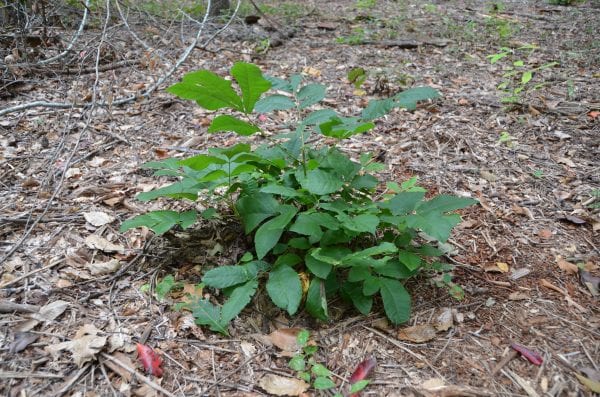
Stump sprouts. Small hardwood stumps often sprout back quickly after a timber harvest and may provide the best regeneration option for many hardwood species.
Sprouts formed from stumps (and from roots in some species such as sweetgum) are another source of new trees. Sprouts grow very vigorously after harvest and are thus capable of out competing other types of vegetation. However, large stumps are unlikely to sprout. Furthermore, sprouts formed on top of tall stumps are susceptible to decay. To encourage good-quality sprouts, trees of desirable species and small size (10 inches DBH and less) should be cut as close as to the ground as possible during or immediately following the harvest. This will force sprouts to come from lower on the stump and thus minimize rot problems.
For a few light-seeded species such as yellowpoplar, green ash, and sweetgum, seeds present before or just after harvest may contribute substantially to the new tree crop. However, for heavy-seeded species such as oaks, seeds that come into an area shortly after harvest seldom develop into crop trees.
No matter what method of regeneration is used, an inventory of the potential for regeneration should be made before the harvest. Ideally, there should be enough seedlings and small trees in place before harvest to produce a total of 400 or more trees per acre of potential crop trees after the harvest. However, as few as 100 well spaced, vigorous trees per acre of high-value species after harvest may be adequate as long as other species are present to fill in the gaps between these 100 crop trees. If a forest does not have adequate numbers of seedlings and small trees before harvest, treatments to get seedlings established or tree planting as described below may be needed.
Tree Planting
In abandoned crop lands or in forests where natural seedlings and small trees of desired species are not present, the planting of seedlings or seed may be needed. The most important step in planting is choosing the right species for the site. This choice can make the difference between success and total failure. For wet sites, consider nuttall oak, willow oak, or green ash. For fertile, well-drained sites, consider cherrybark oak, shumard oak, swamp chestnut oak, sweetgum, or yellow-poplar. These and the other species mentioned in table 1 are only a few of the many that can be planted.
Seedlings can be obtained from a state or private nursery. For best results, get seedlings with stems that are 18 inches tall, a root system pruned to 8 inches long, and a diameter at the stem base of at least .∕8 inches. Plant between January and early March. Don’t let the root systems dry out or become overheated before planting. Plant seedlings 10 to 20 feet apart to achieve a density of 100 to 400 trees per acre.
For large-seeded species such as oak, hickory, and pecan, planting seeds can be used at half the cost of planting seedlings. Seeds can be purchased from seed companies or collected from a nearby forest. For best results, sow the seeds immediately after collecting. If immediate planting is not possible, seeds can be stored at cool temperatures for a year or more. To insure maximum seed viability, seed moisture content, oxygen availability, and temperature must be carefully controlled. Before collecting or storing seeds, call a forester or your county Extension office to find out requirements for the specific species you are working with. Sow seeds between fall and early summer at a density of approximately 1,000 per acre in old fields or less in forested areas where your goal is to supplement naturally established seedlings and sprouts. Seeds should be sown 2 inches below the soil surface to minimize loss to seed-eating mammals.
Between Regeneration and Harvest
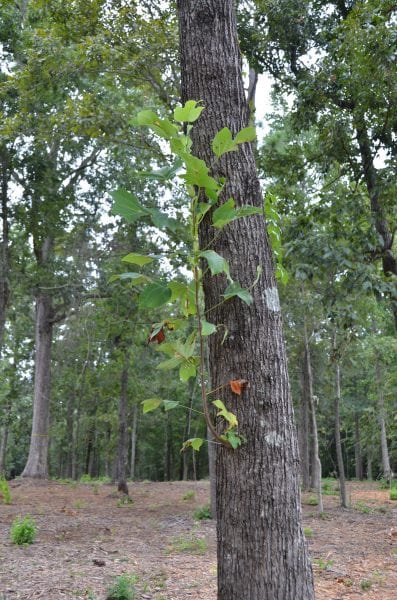
Epicormic branches. Epicormic branches often form on tree trunks after a hardwood stand is thinned. This yellow poplar sprouted an epicormic branch as a result of increased light after a recent thinning.
After a forest has been regenerated, steps can be taken to protect and improve timber value before the next final harvest. Although it is not often considered, prescribed fire can actually be used in upland hardwood forests when trees are less than 10 years old to promote the growth of oaks and hickories. As trees age, the use of fire should be limited. Hardwoods at this stage have thin bark that can be damaged by fire. Once hardwoods become mature (older than approximately 65 years of age) fire can once again be used to help promote regeneration of the next hardwood forest.
To improve timber quality before final harvest, thinning may prove useful in some, but not all forests. The goal of thinning is to remove trees of undesirable quality or species and thereby concentrate more of the total growth in the forest on the remaining better trees. Where markets for hardwood pulpwood exist, thinning can be easily afforded.
Unless carefully done, thinning can degrade hardwoods. Two forms of degrade-logging damage and epicormic sprouts-are important. Logging can damage roots, bark, and branches. These damages can be minimized to 10 percent or less of the crop trees if heavy equipment stays out of the woods when the soil is waterlogged, if logs are carefully removed from the forest, and if directional felling of trees is used to avoid damage to nearby trees.
Epicormic sprouts are branches that form on tree trunks in response to increased light and temperature after the forest is thinned. They cause knots in the sawlog thereby degrading the quality of the wood. Most occur on trees of low vigor. Epicormic sprouting can be minimized if the thinning removes (1) only low-vigor trees, leaving behind high-vigor trees that are less likely to sprout and (2) no more than 40 percent of the total wood volume in the forest. Species differ in their propensity to form epicorrnic sprouts. For yellow-poplar and green ash, epicormic sprouting is not a major concern. For white oak, sweetgum, water oak, and willow oak, epicormic sprouting is hard to avoid.
Summary
Hardwood forests can be managed profitably. For private landowners, the highest values come from large, high-quality trees of desirable species. Well-planned regeneration practices are needed to maintain long-term timber values. In some cases, thinning may speed up growth of the most desirable trees. Harvests should be planned to protect the environment and future timber values. Because tree quality is the key to hardwood timber value, careless or unplanned tree cutting can damage timber and seriously reduce profits. Before carrying out timber cutting in your hardwood forest, contact a professional forester or your county Extension office for help and advice.
Download a PDF of Management of Hardwood Forests for Timber in Alabama, ANR-0581.

